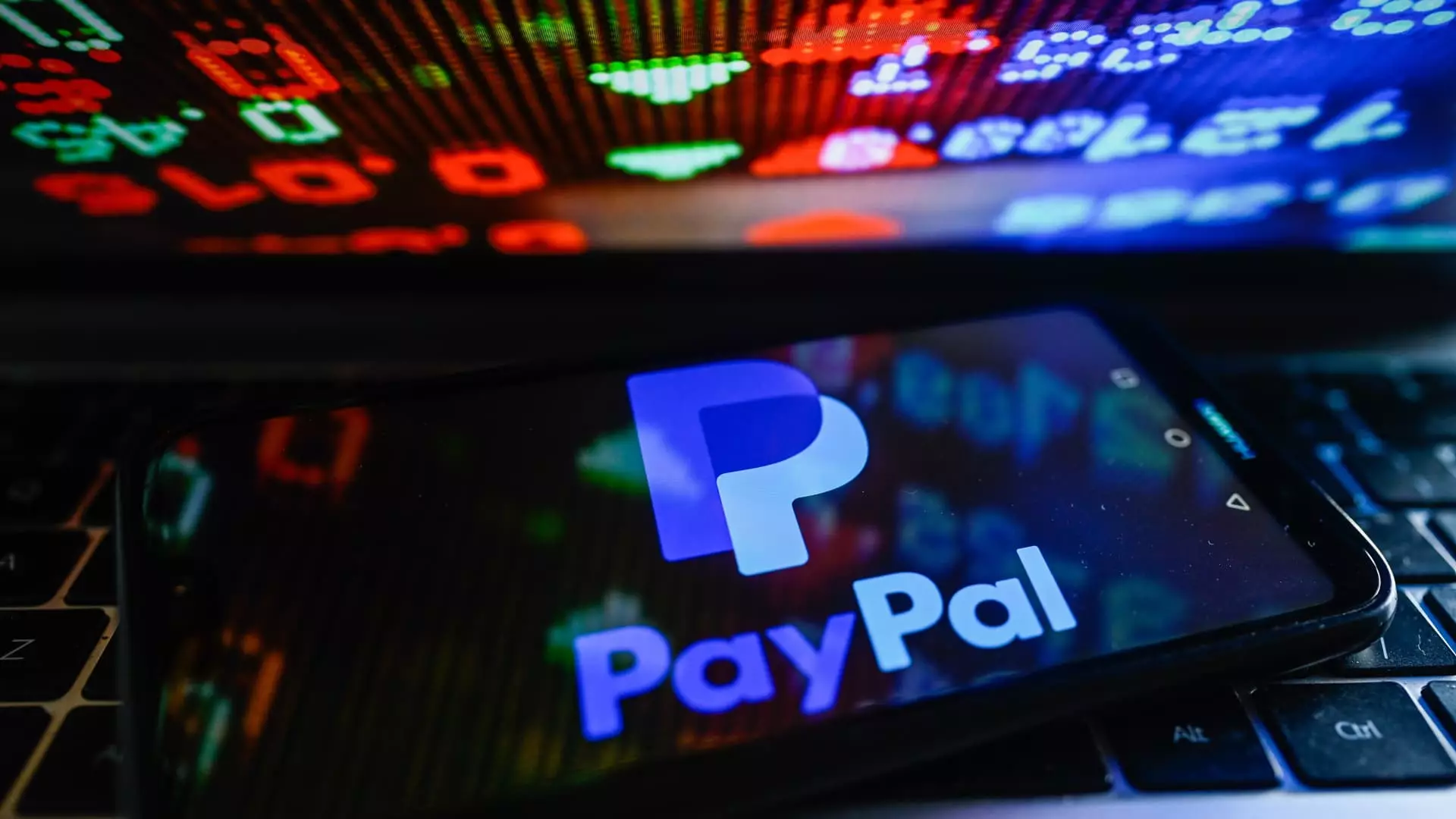In an era where digital currencies are the forerunners of financial evolution, the recent partnership between Coinbase and PayPal signifies a bold move in the cryptocurrency sector. The announcement to eliminate fees for purchasing PayPal’s stablecoin, known as PayPal USD (PYUSD), is not just a mere marketing tactic but a strategic initiative meant to enhance the coin’s adoption and utility. PYUSD, despite its underwhelming market cap of $730 million, represents a colossal opportunity within the financial ecosystem. As established players like Tether and Circle dominate the space, PayPal’s established network of over 430 million users could redefine how stablecoins function in global commerce.
Understanding the Stakes: Market Context
Currently, the USD-pegged stablecoin market is heavily skewed, with Tether’s USDT capturing a lion’s share of 66.5% and Circle’s USDC holding 28.3%. This dynamic positions PYUSD as a potential disruptor in a market where institutional transactions increasingly rely on stablecoins for efficient value transfer. With legislative frameworks around cryptocurrency, particularly stablecoins, on the horizon, the timing of PayPal’s initiative is both strategic and crucial.
This becomes particularly relevant as financial institutions begin to embrace stablecoins for cross-border transactions, moving away from traditional systems. The market is evolving, and the entry of a giant like PayPal signifies that the infrastructure for stablecoins is not just about adaptation but transformation. It is imperative for observers and stakeholders within this ecosystem to advocate for a regulatory environment that encourages competition and innovation.
The Synergy of Coinbase and PayPal
The collaboration between Coinbase and PayPal appears to be an ideal match; one boasts a robust trading platform while the other offers burgeoning financial solutions. With this collaborative effort, both companies aim to cultivate new use cases for PYUSD. The desire expressed by PayPal’s CEO for using PYUSD in decentralized finance (DeFi) initiatives reflects a broader trend of integrating traditional financial principles with emerging technologies.
What’s noteworthy is that Coinbase has catalyzed moves to diversify its revenue stream beyond merely facilitating crypto trading. By investing in stablecoins, it opens doors to new monetization avenues. The dynamic between Coinbbase and PayPal exemplifies how synergies within the crypto space can lead to comprehensive financial solutions.
Potential for Enhanced Financial Inclusion
One of the most promising aspects of this partnership is the potential for enhancing financial inclusion. In a world where many people are still unbanked or underbanked, the ability to transact using digital currencies could revolutionize commerce. Both companies see stablecoins as a pathway to greater accessibility in financial transactions, allowing users to interact with payment systems without the burdens of traditional banking requirements.
Imagine the power of leveraging stablecoins for instant transactions, especially in regions where access to conventional banking is limited or unreliable. PYUSD could serve as a historical turning point, paving the way for more equitable financial practices.
Regulatory Considerations: A Call for Innovation
While the prospects of increased adoption and integration are disconcerting for some, they are necessary for the stablecoin’s evolution. This partnership stands at a crucial juncture when pending legislative efforts may reshape how cryptocurrencies operate in the market. Although regulation can often be viewed as a hindrance to innovation, proper frameworks are essential for fostering growth in the space.
Supportive yet structured regulations can lower barriers to entry for new players while ensuring consumer protection. There should be an assertive push from industry advocates and lawmakers alike to create a conducive environment that encourages experimentation and not just compliance. This will ultimately bolster the entire digital currency ecosystem by level-setting competition.
Looking Ahead: Implications for the Future
The future of cryptocurrency is being forged right now as PYUSD enters the equation. The combination of zero-fee transactions with PayPal’s vast user base positions it to challenge existing industry leaders. Moreover, the evolution of products aimed at simplifying on-chain payments is indicative of a proactive approach to digitizing financial services.
Coinbase’s focus on integrating crypto payments across its suite signals a commitment to an innovative future. It reflects an inherent value: that the cryptocurrency space must adapt to become a mainstream financial tool rather than simply an asset to be traded.
In this context, Coinbase and PayPal are not merely participants in the cryptocurrency game; they have the potential to redefine it altogether, driving a new era of financial transactions and services. The prospect of increased adoption and functionality of stablecoins, while facing multiple regulatory hurdles, is a challenge to embrace rather than fear.
Financial institutions and stakeholders should watch closely as this saga unfolds; there is much more at stake than just a new stablecoin. The implications for the economy as a whole could be monumental.

